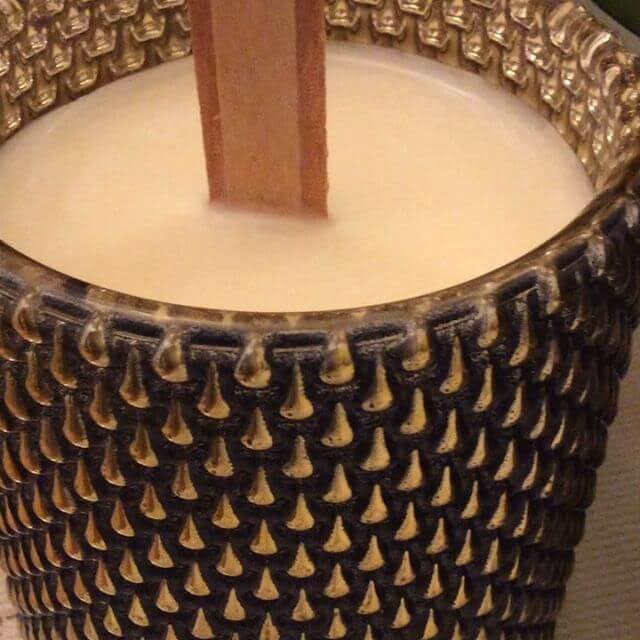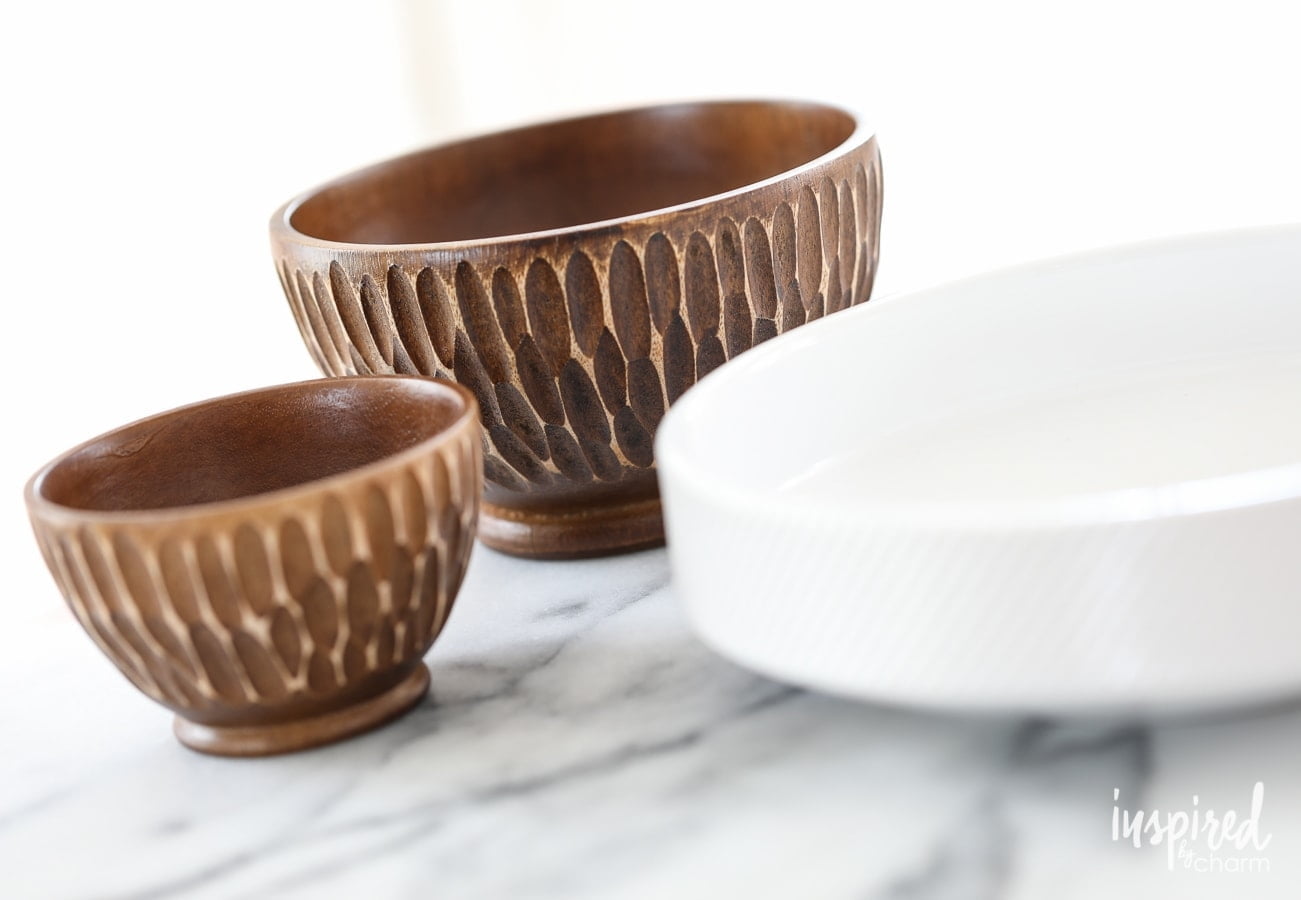Soy taper candles have gained popularity in recent years due to their numerous benefits and timeless elegance. In this article, we will explore why choosing soy wax for your taper candles is a great option and delve into the captivating allure of these classic candle designs.
One of the main advantages of using soy wax in candle-making is its natural composition. Unlike traditional paraffin wax, soy wax is derived from renewable resources, making it an eco-friendly choice. Furthermore, soy wax burns cleaner and emits less soot, reducing indoor air pollution and creating a healthier environment for you and your loved ones.
In addition to their eco-friendly nature, soy taper candles offer a touch of sophistication to any setting. Their slender form exudes elegance and complements various decor styles. Whether used as centerpieces for special occasions or as ambient lighting during intimate gatherings, taper candles create a romantic atmosphere that is both enchanting and memorable.
By choosing soy taper candles over other types of candles, you not only contribute to sustainability but also infuse your space with a refined ambiance that stands the test of time. Join us as we explore the art of making these exquisite candles and discover how you can personalize them to suit your unique style and preferences.
Gathering Materials and Tools
Before you start making soy taper candles, it is important to gather all the necessary materials and tools. Having everything prepared in advance will ensure a smooth and efficient candle-making process. Here is a list of essential materials needed for making soy taper candles:
- Soy Wax: Opt for high-quality soy wax specifically designed for candle-making. Soy wax is preferred because it is sustainable, biodegradable, and burns cleaner than other types of wax.
- Taper Candle Molds: Choose the right mold size and shape based on your preference. Taper candle molds are typically made of metal or silicone and come in various lengths and widths.
- Wick: Select a wick that is suitable for taper candles. It should be long enough to extend through the length of your mold with a little excess at the top for trimming later.
- Fragrance Oils (optional): If desired, choose fragrance oils specifically formulated for candle-making to add scents to your soy taper candles.
- Dyes or Color Blocks (optional): To achieve beautiful color variations in your candles, consider using liquid dyes or color blocks that are specially formulated for use in candle-making.
- Thermometer: A thermometer is essential to ensure accurate temperature control while melting the wax. This ensures proper pouring temperatures and optimal candle performance.
- Heat-Resistant Container: You will need a heat-resistant container such as a double boiler or microwave-safe bowl to melt the soy wax.
- Stirring Utensil: Use a dedicated utensil like a spoon or wooden stick to stir the melted wax and fragrance/color additives thoroughly.
Recommended tools that can facilitate the candle-making process include:
– Double Boiler: Using a double boiler provides gentle indirect heat during melting, preventing overheating of the wax.
– Measuring Tools: Accurate measurement is vital in candle-making, so invest in measuring cups or scales for precise quantities of wax and additives.
– Candle Wick Centering Device: A wick centering device helps hold the wick in place while pouring the melted wax into the molds.
– Heat Gun or Hair Dryer: These tools are handy for eliminating air bubbles that may form while pouring the wax.
– Mold Release Spray (if using metal molds): This spray helps release the candles from their molds easily, ensuring a smooth finish.
Having all these materials and tools at hand will set you up for success in creating beautiful and elegant soy taper candles. Once you have gathered everything, you can proceed to the next step of preparing the taper candle molds.
Preparing the Taper Candle Molds
Choosing the Right Mold Size and Shape
When preparing to make soy taper candles, it is important to choose the right mold size and shape. Taper candle molds come in various sizes, ranging from short and stubby to long and slender. Consider the desired length and thickness of your taper candles when selecting a mold. Longer taper candles are ideal for dramatic centerpieces or special occasions, while shorter ones can be perfect for everyday use.
In addition to size, you should also consider the shape of the mold. Traditional taper candle molds have a straight, smooth design that creates a classic look. However, there are also spiral or twisted molds available that add an interesting twist to your candles. Ultimately, choose a mold that fits your personal style or matches the aesthetic you want to achieve with your soy taper candles.
Cleaning and Prepping the Molds
Before pouring your melted wax into the taper candle molds, it is crucial to clean and prep them properly for optimal candle-making results. Start by washing the molds with warm soapy water to remove any dirt or debris. It is essential to ensure that there are no residues left on the molds as these can affect how well the wax adheres to them.
After cleaning, it is recommended to lightly coat the inside of each mold with a release agent spray or oil. This will prevent sticking and make it easier to remove the finished candles from their molds once they have cooled and solidified. Be sure to evenly distribute the release agent throughout each mold by using a soft cloth or brush.
Additionally, consider placing wick anchors at one end of each mold before pouring in the wax. These anchors help secure the wicks in place during cooling and prevent them from shifting or falling out as you handle your finished taper candles.
Creating Unique Candles with Customized Molds
While traditional straight molds are commonly used for making soy taper candles, you can also explore using customized molds to create unique and eye-catching candles. There are silicone molds available in various shapes and designs, such as flowers, geometric patterns, or even animals. These molds offer endless possibilities for adding a creative touch to your soy taper candles.
To use customized molds, ensure that they are made from high-quality food-grade silicone material that can withstand the heat of melted wax. Follow the manufacturer’s instructions for properly prepping and using these molds to ensure successful candle-making. Keep in mind that using intricate or detailed designs may require extra care when removing the finished candles from the mold.
Once you have selected and prepped your taper candle molds, you are ready to move on to the next step of the candle-making process: melting the soy wax.
Melting the Soy Wax
When it comes to making soy taper candles, one of the most important steps in the process is melting the soy wax. Melting the wax correctly ensures that your candles will have a smooth and even texture, which is essential for both appearance and performance. In this section, we will provide a step-by-step guide to melting soy wax and explore different methods you can use.
Step-by-Step Guide
- Begin by preparing your work area. Choose a clean and well-ventilated space, preferably near a heat source like a stove or microwave.
- Measure out the amount of soy wax needed for your candles. Use a kitchen scale to ensure accuracy because the ratio of wax to fragrance and colorants affects the final result.
- If you are using a double boiler method, fill the bottom pot about halfway with water and place it on low heat.
- Place the measured soy wax into the top pot or heat-safe container for melting. Ensure that no water gets into the wax as it can ruin its texture.
- Slowly heat up the double boiler until the water starts simmering gently. Stir occasionally to help speed up the melting process.
- If you prefer using a microwave, place your measured soy wax in a microwave-safe container and heat it in short increments of 30 seconds at medium power level, stirring between each interval until completely melted.
Different Methods
There are various methods you can use to melt soy wax for taper candles, but two popular techniques are using a double boiler or a microwave.
– Double Boiler Method: This method involves using indirect heat from boiling water to slowly melt the wax without damaging its properties. It is considered safer than directly heating over an open flame or high temperatures because it reduces the risk of scorching or burning.
– Microwave Method: This method provides convenience and quick results, especially for smaller batches of candles. However, it requires careful monitoring and stirring to avoid overheating or uneven melting.
Whichever method you choose, it is important to melt soy wax slowly and gently to prevent any degradation in quality. Always keep an eye on the wax, stirring occasionally to ensure even heat distribution.
Adding Fragrance and Color
Adding fragrance and color to your soy taper candles can enhance the overall experience and aesthetic appeal. Whether you want your candles to smell like spring flowers or have vibrant, eye-catching hues, there are various ways to achieve these effects. In this section, we will explore options for adding scents and techniques for achieving beautiful color variations in your soy taper candles.
When it comes to adding fragrance to your candles, there are a few options available. One popular method is using fragrance oils specifically designed for candle making. These oils come in a wide range of scents, allowing you to create customized aromas for your soy taper candles. It is important to follow the recommended usage rates provided by the manufacturer when using fragrance oils to ensure optimal scent throw without overpowering the candle.
Another option is using essential oils, which can provide natural and therapeutic scents. However, it’s important to note that not all essential oils are suitable for candle making as some may have a lower flash point or can cause discoloration. Always research and choose essential oils that are safe for use in candles.
In terms of color, there are several methods for achieving beautiful color variations in your soy taper candles. One option is using liquid dye specifically formulated for candle making. These dyes come in a wide range of colors and can be easily mixed together to create unique shades. It’s important to follow the instructions provided by the manufacturer regarding usage rates and how much dye should be added per amount of wax.
Another option is using natural additives such as botanicals or spices to add color and texture to your candles. For example, dried flower petals or herbs can give your candles an organic look while adding subtle hints of color.
| Method | Description |
|---|---|
| Fragrance oils | Specifically designed for candles, wide range of scents available |
| Essential oils | Natural and therapeutic scents, choose oils suitable for candle making |
| Liquid dye | Formulated for candle making, wide range of colors, easily mixable |
| Natural additives (botanicals, spices) | Adds color and texture to candles with an organic look |
Pouring and Cooling the Candles
Pouring and cooling the candles is a crucial step in the process of making soy taper candles. It ensures that the candles set properly and have an even appearance. Here are some tips and techniques to help you pour and cool your candles effectively.
The best pouring temperatures for soy taper candles
When it comes to pouring soy wax into the molds, it is important to consider the temperature at which you pour. The ideal pouring temperature for soy wax tapers is typically between 120-140°F (49-60°C). This temperature range allows the wax to flow smoothly without causing any damage to the molds or compromising the integrity of the finished candles.
To achieve this optimal pouring temperature, it is recommended to use a thermometer specifically designed for candle making. This will help you monitor and maintain the temperature throughout the process. If the wax becomes too cool while you are working, you can heat it gently using a heat gun or by placing it back in a double boiler until it reaches the desired temperature.
Ensuring even cooling and setting for perfect-looking candles
After pouring the melted soy wax into your taper candle molds, it is important to allow them to cool and set properly. This will ensure that your candles have a smooth surface and an even texture.
To promote even cooling, make sure that the ambient temperature in your workspace is not too hot or too cold. Extreme temperatures can affect how evenly your candles solidify. Additionally, avoid moving or disturbing the molds while they are setting as this can cause uneven surfaces.
Once your candles have cooled and solidified completely, which usually takes around 2-4 hours depending on the size of your tapers, carefully remove them from the molds. Gently tap on each mold or flex them slightly to release any air pockets between the candle and mold walls. Finally, inspect each candle for any imperfections or air bubbles that may need to be addressed before moving on to the next step.
By following these pouring and cooling techniques, you can ensure that your soy taper candles have a professional and polished appearance, making them perfect for any occasion or decor.
Trimming the Wick and Finishing Touches
Once your soy taper candles have fully cooled and set, it’s time to give them a final touch to enhance their appearance and ensure a perfect burning experience. One crucial step in this process is trimming the wick to the appropriate length for taper candles. Trimming the wick not only helps with an even burn but also prevents excessive smoke and flickering.
To trim the wick, you will need a pair of scissors or a wick trimmer specifically designed for candles. It’s important to ensure that the wick is about ¼ inch long before lighting it. Trimming it too short may result in poor combustion, while leaving it too long can cause unnecessary smoke or uneven burning.
In addition to trimming the wick, you can further personalize your soy taper candles by adding decorative touches. This could include tying a ribbon around the base of the candle or attaching small charms that match your desired theme or occasion. These simple additions can elevate the overall aesthetic of your candles and make them even more visually appealing.
Remember to be creative when choosing your finishing touches, but also keep in mind that any added decorations should be heat-resistant and safe to use around an open flame. Be cautious not to place flammable items directly on or near the candle’s surface and always monitor your candle while it is burning.
By taking these steps to trim the wick and add finishing touches, you are not only ensuring optimal performance but also enhancing the overall visual appeal of your soy taper candles. These small details contribute to creating a more enjoyable experience when burning your homemade candles.
Tips for Properly Burning Soy Taper Candles
Once you have successfully made your own soy taper candles, it’s important to know how to properly burn them to get the most out of your creations. Here are some tips to ensure a safe and enjoyable candle-burning experience.
1. Trim the wick: Before lighting your soy taper candle, always trim the wick to about 1/4 inch in length. This helps prevent excessive flickering, smoking, and uneven burning. Use a wick trimmer or scissors specifically designed for candle trimming for the best results.
2. Check for drafts: Make sure to place your candle away from any drafts or strong air currents. Drafts can cause a candle flame to flicker or even go out, resulting in an uneven burn. Also, avoid placing your candles near open windows or fans that could create a draft.
3. Burn within sight: Never leave a burning candle unattended. Keep an eye on your soy taper candles while they are lit and extinguish them before leaving the room or going to bed. It’s always better to be cautious when dealing with any open flame.
4. Avoid overburning: To prevent tunneling (when only a small portion of the wax melts), allow your soy taper candles to burn for at least one hour per inch in diameter during their first lighting. This helps establish an even melt pool and prevents wasted wax along the sides of the candle.
5. Extinguish safely: When it’s time to put out your soy taper candle, do so by using a snuffer or gently blowing it out instead of dunking the wick into the melted wax. Dunking can cause hot wax to splash, potentially causing burns or fire hazards.
6. Practice safety precautions: Always keep candles on stable surfaces and away from flammable objects such as curtains, papers, or fabrics that could catch fire. Also, make sure to keep candles out of reach of children and pets to avoid accidents.
By following these tips, you can enjoy the warm ambiance and delightful fragrances of your homemade soy taper candles safely and efficiently. Remember, proper burning techniques help maximize the lifespan of your candles and ensure they continue to provide a cozy atmosphere for many hours to come.
Troubleshooting Common Issues
One of the joys of making soy taper candles is the satisfaction that comes from creating something beautiful with your own hands. However, like any craft, candle-making can sometimes have its challenges. In this section, we will address some common issues that may arise during the candle-making process and provide solutions to help you overcome them.
One potential challenge when making soy taper candles is achieving an even burn. Uneven burning can be caused by a variety of factors, such as an improperly centered wick or a draft in the environment where the candle is burning. To prevent this issue, ensure that your wick is securely centered in the mold before pouring the wax. Additionally, place your candles in a draft-free area when burning to promote an even and consistent burn.
Another common issue that may arise is the presence of air bubbles in your finished candles. Air bubbles can be unsightly and may affect how evenly your candle burns. To minimize air bubbles, it’s important to pour your wax slowly and carefully into the molds.
Avoid stirring the wax vigorously as this can introduce air into the mixture. If air bubbles do appear, you can try using a heat gun or torch to gently heat the surface of the candle and release any trapped air bubbles.
Lastly, frosting is another issue that may occur when working with soy wax. Frosting refers to the crystalline appearance that can develop on the surface of soy candles over time. While frosting does not affect the quality or performance of your candle, some prefer a smoother look. To minimize frosting, you can try pouring your wax at a slightly higher temperature or add a small amount of stearic acid to your wax mixture.
By understanding these common issues and having solutions at hand, you’ll be well-prepared to troubleshoot any problems that may arise during your soy taper candle-making journey. Remember that practice makes perfect, so don’t be discouraged if you encounter challenges along the way. With time and experience, you’ll become more confident in your abilities and enjoy the process of creating beautiful soy taper candles.
Conclusion
In conclusion, the process of making soy taper candles offers a multitude of benefits and endless possibilities for creativity. By choosing soy wax, candle makers can enjoy the advantages of a clean-burning and eco-friendly wax that is also easy to work with. The elegance and timeless appeal of taper candles add a touch of sophistication to any setting, making them a popular choice for various occasions.
Throughout this article, we have covered every step necessary to successfully create beautiful soy taper candles. From gathering the materials and tools needed to preparing the molds and melting the wax correctly, each stage has been thoroughly explained. We have also discussed techniques for adding fragrance and color variations, as well as ensuring proper pouring temperatures and cooling methods.
Additionally, we have provided tips for trimming the wick, adding decorative touches, properly burning soy taper candles, and troubleshooting common issues that may arise throughout the candle-making process. By following these guidelines, readers can achieve the most from their homemade candles while ensuring a safe and enjoyable burning experience.
The joy of making soy taper candles lies not only in the accomplishment of creating something by hand but also in the ability to personalize each candle according to one’s own taste. Experimentation with different scents, colors, wicks, or decorative elements allows for endless customization possibilities. So go ahead and embark on this rewarding journey of candle-making – let your creativity flow and enjoy the satisfaction that comes with crafting your very own soy taper candles.

Welcome to my candle making blog! In this blog, I will be sharing my tips and tricks for making candles. I will also be sharing some of my favorite recipes.





